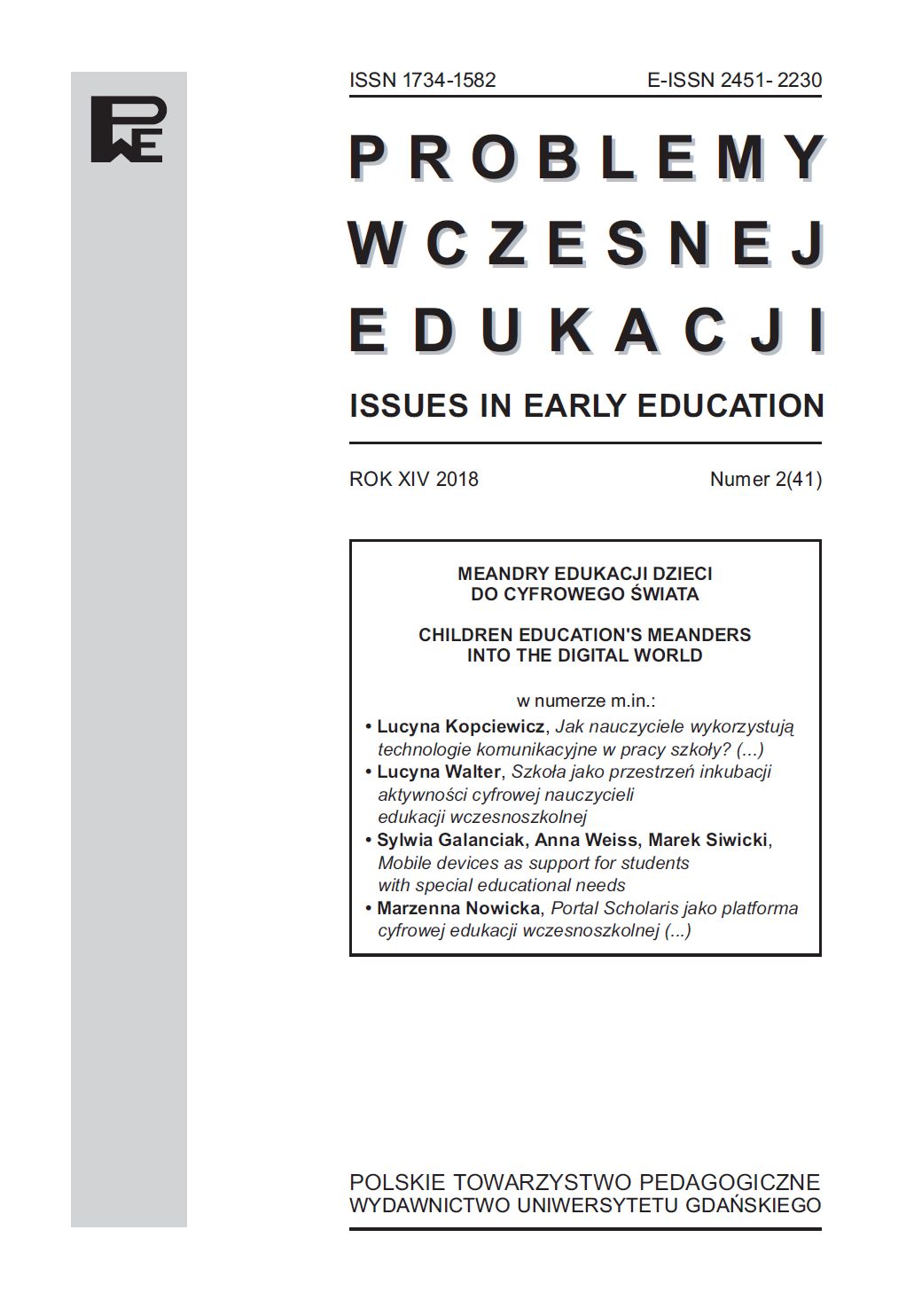Jak nauczyciele wykorzystują technologie komunikacyjne w pracy szkoły? Cyfrowe projektowanie dydaktyczne i teoria Pierra Rabardela w badaniach dydaktycznego potencjału urządzeń mobilnych
DOI:
https://doi.org/10.26881/pwe.2018.41.01Słowa kluczowe:
wczesna edukacja, technologie mobilne, roboty, projektowanie dydaktyczne, narzędzia, mediacjaAbstrakt
This article presents and discusses results of empirical research conducted during 2 school semesters at primary school in Poland. This study, using a qualitative approach, aims at the tracing of the process of the implementation of tablets and robots to the didactic design at primary school, the tracing of progressive changes in the area of teaching and learning practices. The results show the dominating technological schemes developed by teachers: a) technologies function in a “closed” form – they are used for displaying ready content and structures to be identified or memorised and b) technologies are used by teacher as “open structures” constituting a collection of various tools subordinated to the intentions of the child as an active creator.
Downloads
Bibliografia
Cerratto Pargman T., Nouri J., Milrad M. (2017), Taking an instrumental genesis lens: New insights into collaborative mobile learning. “British Journal of Educational Technology”, 1, doi:10.1111/ bjet.12585.
Dylak S. (2013), Architektura wiedzy w szkole. Warszawa, Difin.
Jahnke I., Bergström P., Mårell-Olsson E., Häll L., Kumar S. (2017), Digital Didactical Designs as research framework: iPad integration in Nordic schools. “Computers & Education”, 113.
Jahnke I., Kumar S. (2014), Digital Didactical Designs: Teachers’ integration of iPads for learningcentered processes. “Journal of Digital Learning in Teacher Education”, 30 (3).
Klus-Stańska D. (2011), Dlaczego szkolna kultura dydaktyczna się nie zmienia? „Studia Pedagogiczne”, 64.
Klus-Stańska D. (2012), Wiedza, która zniewala: transmisyjne tradycje w szkolnej edukacji. „Forum Oświatowe”, 46 (1).
Lonchamp J. (2012), An instrumental perspective on CSCL systems. „International Journal of Computer-Supported Collaborative Learning”, 7.
Puentedura R. (2014), SAMR Model, http://sites.google.com/a/msad60.org/technology-is-learning/samr-model.
Rabardel P. (1995), Les hommes et les technologies, une approche cognitive des instruments Contemporains. Paris, Armand Colin.
Rabardel P., Samurcay R. (2001), From artifact to instrument-mediated learning. International symposium organized by the Center for Activity Theory and Developmental Work Research. Helsinki, University of Helsinki.

 Uniwersyteckie Czasopisma Naukowe
Uniwersyteckie Czasopisma Naukowe





